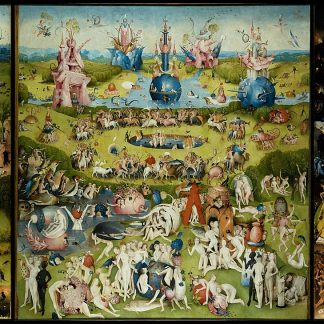Hieronymus Bosch was a Dutch painter born in the late 15th century, known for his bizarre and fantastical imagery that often depicted complex, allegorical scenes with strong religious overtones. Bosch’s paintings were characterized by a unique and highly imaginative approach to composition, as well as a keen sense of symbolism and metaphor. His work was highly influential, both during his own lifetime and in the centuries that followed, and he is today recognized as one of the most important painters of the Northern Renaissance.
Bosch’s paintings are full of intricate details, and often contain strange, grotesque figures that seem to be part-human, part-animal or even part-vegetable. Many of his works deal with themes of sin and morality, and his imagery often includes demons, monsters, and otherworldly creatures that seem to embody various vices and failings of human nature. Bosch’s style was highly original and innovative, and his work has continued to captivate and intrigue viewers for centuries. Despite the religious themes in much of his art, Bosch’s work also contains a strong sense of humor and satire, making it both thought-provoking and entertaining. Today, his paintings can be found in collections around the world, and continue to inspire and challenge audiences with their complex, enigmatic imagery.
Showing the single result
-

The Garden of Earthly Delights
Bosch, Hieronymous From $34.44 Select options This product has multiple variants. The options may be chosen on the product page
Showing the single result

